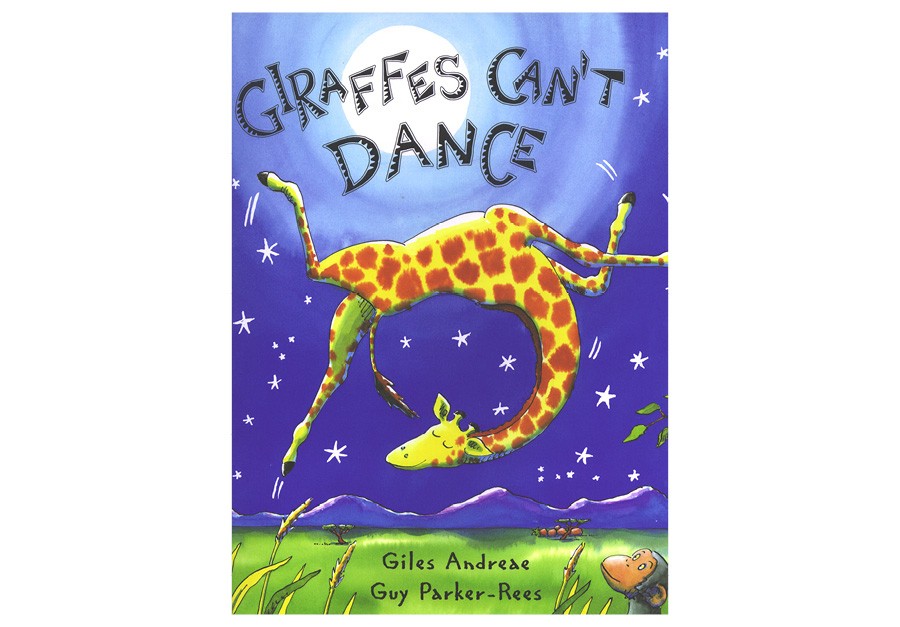SEL Read Aloud: Giraffes Can’t Dance by Giles Andreae

Summary
In “Giraffes Can’t Dance” by Giles Andreae, Gerald is a tall giraffe with crooked knees, thin legs — and no confidence in his dancing abilities. Every year, the animals from al over gather for the jungle dance, and Gerald feels sad. The other animals mock him, and Gerald walks away feeling useless and alone. However, he stumbles upon a wise cricket who tells him that everyone can dance when they find the music they love. Inspired by the beautiful moon and the music of nature, Gerald discovers his own unique dance moves and surprises everyone with his talent. The animals are amazed, and Gerald teaches them that dancing is for everyone, regardless of their differences.
Comprehension Questions
Six questions aligned to Bloom’s taxonomy for teacher’s to evaluate students’ comprehension
- Remembering: What do the other animals say about Gerald’s dancing?
- Understanding: How does Gerald’s perspective change after his encounter with the cricket?
- Applying: Imagine you are one of the animals at the jungle dance. How would you have reacted to Gerald’s dancing?
- Analyzing: How does Gerald’s self-perception change throughout the story?
- Evaluating: How does the author use illustrations and descriptive language to convey Gerald’s emotions and transformation?
- Creating: Create a new ending to the story where Gerald helps another animal discover their hidden talent. Describe the animal, their talent, and how Gerald supports them.
CASEL Discussion Questions
Five questions aligned to the CASEL competencies for teachers to foster an engaging discussion and foster social-emotional learning
- Self-Awareness: Can you think of a time when you were self-aware of your strengths and weaknesses? How did this self-awareness help you navigate a situation?
- Self-Management: How does Gerald demonstrate self-management when he decides to walk away from the dance floor?
- Social Awareness: Why is it important for individuals to be aware of and show empathy towards others’ feelings and experiences?
- Relationship Skills: How do the other animals’ reactions to Gerald change once they see him dancing? How does this relate to building positive relationships?
- Responsible Decision Making: What risks and benefits did Gerald consider before deciding to embrace his unique dancing style?
Design Thinking Challenge
Take students’ learning even further by incorporating the Imagineerz design thinking framework
Design and create a dance party experience specifically tailored for Gerald.
Understand
- Read aloud the book “Giraffes Can’t Dance” to students, and facilitate a class discussion about the story, emphasizing the themes of celebrating individuality, embracing differences, and finding joy in self-expression.
- Divide students into small groups and assign each group an animal character from the book. In their groups, have students research and discuss the unique characteristics, movements, and preferences of their assigned animal. Encourage them to think about how their assigned animal would want to experience and participate in a dance party.
Ideate
- Have students brainstorm ideas and sketch their dance party designs, considering the dance floor, decorations, music, lighting, and ways to engage all the animal characters.
Prototype
- Provide art supplies and craft materials for students to create small-scale models or drawings of their dance party designs.
Test
- Each group presents their dance party design to the class, explaining how their design celebrates individuality and promotes inclusivity.
- After each presentation, encourage the class to ask questions and provide constructive feedback to further develop the designs.
- Facilitate a whole-class discussion where students reflect on the design process, sharing their challenges, successes, and lessons learned.
Read Aloud
If you appreciated getting to read this book with your class, you might also want to share this book with them!
Additional Resources
Copyright Notice
The image on this page comes from the book Giraffes Can’t Dance by Giles Andreae. Copyright © 2001 by Giles Andreae.


